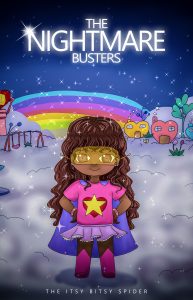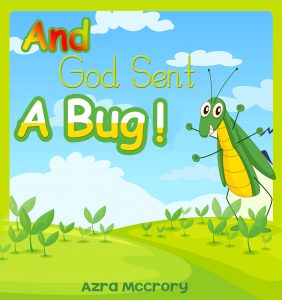LEARNING FOUNDATIONS

Constructivist Learning
“You cannot teach a man anything; you can only help him find it within himself”
–GALILEO
What a profound statement from Galileo! What irony that it can be attributed to how we view learning with children as well. This statement says so much to me as an Early Childhood Professional, because my experience has lead me to believe there is an abundance of simple truth in this statement alone. In fact, I would add, that it can lead us a great deal into how we work with children and people of all ages.
Learning is experienced, just as much as it is taught, and wisdom tells us, this is how it is truly taught. You can read a book to me, but the book takes on new form in a learners way, when it is understood and applied in life. Sounds good right, but we are talking about children, so how can we make it understood to them in real life, you may ask? I will attempt to explain that here through the avenue of Constructivism.
Simply put, Constructivist Learning is about “building knowledge from within” (Foundations and Best Practices, 2011 ). Constructivism is defined as a “theory of knowledge and learning that posits that children actively engage with their world-people, experiences, materials-and build their beliefs and knowledge through interaction and internal processes (Follari, 2011). A constructivist takes the learning materials and brings it into new life for children to gleam from. Let’s break down constructivist learning a little more!
The Roles of the Learner: where learners engage in-
- Interaction with childcare workers and other students
- Exploration with materials
- Reasoning by way of the inner processes
The child as as learner is a most valuable part of the construction of knowledge process. This knowledge is shaped by beliefs, prior experiences of the child, and learning itself (Follari, 2011). With a constructivist approach to learning you see the process of “making sense” will involve the building of a new cognitive framework that will incorporate both old and new information in a meaningful way that the learner can make sense of (Follari, 2011). The building of of the new cognitive framework consists of ideas being challenged by new information that the learner will then interpret and make sense of within the context of their previous experiences. A child’s previous experiences include how they perceived information before the new information.
Constructivist Learning Applied: (Follari, 2011)
- Asking questions
- Answering questions
- Formulating hypotheses
- Testing out the hypotheses
- Dialoguing with peers and teachers
- Confronting the challenges to your thinking and others’
- Examining, exploring, and reflecting on the results
Learning is considered more of a dynamic inquiry process, or the process of thinking, in which the constructivist aims to make the child a part of. Contrary to the more traditional approach with learning in the past, and in most school systems, in the constructivist classroom children are not the passive recipients of information given by teachers (Follari, 2011), but active and integral partners in the problem solving process of questioning, examining, considering, and even the answering of questions. With constructivist learning children are not just given answers to problems and questions, nor are they sent out to deal with challenges solo when or if they are not equipped to meet them; instead children are given teacher support to help them discover ways to navigate through the challenges, helping them to reflect on solutions (Follari, 2011), thereby becoming a part of the problem solving and cognitive processing.
The Role of the Early Childhood Professional/Teacher
For starters the role of the teacher through constructivism prevents them from staying or being shallow. For example, the teacher doesn’t just say “good job” to the child who painted the candy corn, but instead the teacher takes it a step further and offers some insight, and jumps in on the learning opportunity that is right there. Some teachers may use it as an opportunity to teach some artistic vocabulary, for instance, or provide a more reflective and thoughtful response that gives a careful analysis with regard to the student’s work (Follari, 2011). The more developed teacher will ultimately use opportunities like these to offer ideas that stem from more of an expert-based knowledge.
Side Note-Now you do not have to take it as far as I described, because that can be intimidating for the teacher with less training, however, the point is, that you can start somewhere other than the surface of shallow waters. Constructivism is going a little deeper and not always swimming where it’s easiest.
In the role of the early childhood professional, you would do well to use comments that are more encouraging, and help children to think more about what they are doing. The words you use when working with children in this way become a tool that deliberately stretch children in their thinking, assist them in reflection, and display more thoughtful and meaningful learning and engagement practices in your classroom, known as constructivist scaffolding.
Constructivist Scaffolding: is when the teacher takes on the active role as a facilitator and guide in the childs’ activities and cognitive processes in their learning experiences (Follari, 2011).
Scaffolding: as defined by Foundations and Best Practices says- it involves the dynamic and active assistance from the more expert partner, who relies heavily on verbal cues, prompts, and questions. The teacher provides clues that “nudge” the child’s thinking or actions in solving a problem or completing a task. Be careful to give just enough help to avoid overriding the child’s own process. Scaffolding requires that the teachers know how children are capable of thinking-what their developmental level is at the moment. As children become more capable, the assistance is reduced. In this way, the teacher’s help acts as a stronger support as children need more help and as a lesser support as they become more independently capable in the task.
These definitive terms bring me to the next concept to keep in mind regardless of your teaching style or the dynamic of your classroom.
Balance
All teaching styles and techniques require balance. While it is important to facilitate and provide direct guidance with the children you teach, it is equally important to serve as an indirect support. Thus the statement, Learning is experienced, just as much as it is taught, and wisdom tells us, this is how it is truly taught.

Through the balance of a direct and indirect presence and guidance, children can learn to be engaged and thoughtful with their work, as well as with their peers (Follari, 2011). Furthermore, children who take part in this form of “deeper cognitive engagement” embody the results found in the constructivist classroom.
The Balancing Act of a Constructivist:
- Pose questions that engage and problems that are challenging
- Give students the information needed
- Help to focus a childs’ attention towards a certain aspect of the activity
- Be the supportive aid for the childs’ research and lead them to find information for themselves
- Prompt children to tap into a new strategy for solving a problem
- When the child is problem solving, don’t tell them the solution, help them uncover it, then let them decide regardless of your own opinion of what is the best decision.
- Allow them to discover the results of decisions
- Provide direct and/or indirect assistance in allowing new information to help shape a new decision, or a future decision that was based off of them learning the results that stemmed from their previous information/understanding/perception of a matter
- Observe/Consider a childs’ dialogue and action
- Promote collaboration
Balance and scaffolding requires you to maintain the awareness that you are only PART (nonetheless a big part) of the childs’ critical thinking with regard to phenomena in their world and the exploration of it in a personal way. This type of active and personal involvement is learner-centered and makes the constructivist learning internal, accessible, real, interesting, and meaningful (Follari, 2011).
Keep In Mind — children who choose materials, initiate the activity, or are permitted to enjoy free play, are more engaged in the learning and their learning becomes more meangingful (Follari, 2011).
Contemporary Constructivist Beliefs and Practices
The 2 branches of the contemporary constructivist tree are sociocultural constructivism and cognitive-developmental constructivism. The 2 theorists who have largely shaped these branches are Piaget and Vygotsky.
Piaget supported and influenced the term cognitive developmental constructivism, in which he believed that a child actively constructs their knowledge through the cognitive processing known as their personal experiences, and it is driven by their natural innate desire to manipulate and explore materials in their world (Follari, 2011).
Vygotsky supported and influenced the concept of sociocultural constructivism, whereby he believed that knowledge is constructed through a series of active mental/cognitive processes while it is also greatly and simultaneously influenced by a person’s cultural and social environment (Follari, 2011). In this belief the person’s interaction with the world (society, peers, parents, teachers, cultural norms, beliefs, and traditions) are all varying factors that contribute to the construction of knowledge in the person.
Cognitive Developmental Constructivism-aims to explain how exactly a learning child shapes his/her world. According to Foundations and Best Practices (Follari, 2011), “it is a theory of knowledge as an individual construct built through maturation and new experiences that challenge the learner’s existing knowledge.”
Socio-cultural Constructivism-aims to understand or explain how the learning child is shaped by the world. According to Foundations and Best Practices (Follari, 2011), “it is a theory of knowledge as socially constructed and then internalized; as such, the social and cultural environment heavily influence knowledge construction.”
After learning a little bit more about the definitive terms for these 2 contemporary constructivist beliefs, it is easy to see how one compliments the other, and I believe, both are relative and equally influencial in a child’s cognitive and social development when seen through the lens of not only the constructivist, but anyone who works in the early childhood field.
This Meeting is Adjorned!
Without going any further into the understanding of Constructivist Learning, I will conclude that it has contributed some meaningful and essential components to a child’s educational world. Constructivist Learning is definitely something that should be considered in any early childhood program, and included as a type of best practice when working with children. I am of the school of thought that a balanced medley of educational methods, knowledge, and approaches will ensure that we have a better outcome when working with children. There is no doubt, the constructivist approach is one that should be highly considered and respected as a working model for giving our children the advantage in their world of learning.
References
Folari, Lissanna M. (2007, 2011) Foundations and Best Practices in Early Childhood Education: HISTORY, THEORIES, AND APPROACHES TO LEARNING.
Upper Saddle River, NJ 07458. Pearson Education, Inc.



